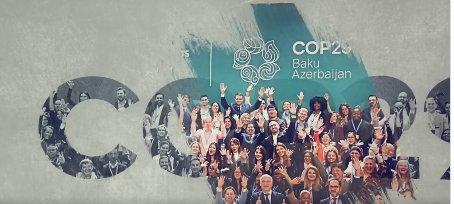
(Photo : X.com)
Landmark Decision: COP29 Greenlights International Carbon Markets
- COP29 concluded negotiations on Article 6 of the Paris Agreement, enabling the creation of international carbon markets.
- Article 6 aims to facilitate cooperation between countries to reduce emissions and could save up to $250 billion annually.
- The agreement is expected to drive investment in developing countries, ensuring transparency and environmental integrity.
- The success of this initiative depends on the effective implementation of the newly adopted rules and the commitment of all parties to the Paris Agreement.
In a landmark decision that could potentially reshape the global fight against climate change, the 29th session of the Conference of the Parties to the United Nations Framework Convention on Climate Change (COP29) has successfully concluded negotiations on Article 6 of the Paris Agreement. This pivotal move paves the way for the establishment of international carbon markets, a tool that could significantly bolster global efforts to reduce greenhouse gas emissions.
Article 6 of the Paris Agreement, a provision that has been the subject of intense negotiations for over a decade, is designed to facilitate cooperation between countries in their efforts to reduce emissions. It provides a framework for the creation of trusted and transparent carbon markets, which could potentially save up to $250 billion annually in the implementation of national climate plans, according to a report by Xinhua news agency.
The COP29 President, Mukhtar Babayev, hailed the conclusion of the negotiations as a significant step forward in the global fight against climate change. We have ended a decade-long wait and unlocked a critical tool for keeping 1.5 degrees in reach, he said. Climate change is a transnational challenge, and Article 6 will enable transnational solutions.
Unlocking Potential of Carbon Markets
The agreement reached at COP29 is expected to drive substantial investment in developing countries, ensuring transparency and environmental integrity. The newly adopted rules will facilitate real, additional, and measurable emission reductions while respecting human rights and promoting sustainable development.
This breakthrough follows years of stalled negotiations at previous COP meetings. Notably, the meetings in Glasgow and Sharm El-Sheikh saw the establishment of initial rules for carbon markets, but key components remained unresolved. The dual-track approach adopted at COP29 broke the deadlock, leading to a unanimous adoption of the final rules for Article 6.
The successful conclusion of the negotiations on Article 6 is reminiscent of the Kyoto Protocol's Clean Development Mechanism (CDM), a similar initiative aimed at reducing greenhouse gas emissions. The CDM, which was established in 1997, allowed developed countries to invest in emission reduction projects in developing countries and, in return, earn carbon credits. However, the CDM faced criticism for its lack of transparency and accountability, issues that Article 6 aims to address.
A Significant Step Forward
The agreement reached at COP29 represents a significant step forward in the global fight against climate change. By unlocking the potential of international carbon markets, the agreement could drive substantial investment in developing countries, facilitate real and measurable emission reductions, and promote sustainable development. However, the success of this initiative will ultimately depend on the effective implementation of the newly adopted rules and the commitment of all parties to the Paris Agreement.
* This is a contributed article and this content does not necessarily represent the views of btin.co.in









